What to Do If Your Pet is Bleeding: A Quick and Practical Emergency Guide
When your pet is bleeding, quick action can be life-saving. Whether it’s a minor cut, a deep wound, or internal bleeding, knowing how to respond before reaching a veterinarian can make all the difference.
At Mission Veterinary Clinic & Animal Emergency Hospital in Granada Hills, CA, we specialize in urgent care for bleeding injuries in pets. This guide will help pet owners understand the common causes of bleeding, emergency first aid steps, and when to seek veterinary care.
Common Causes of Bleeding in Pets
Bleeding in pets can range from minor scrapes to life-threatening emergencies. Understanding the possible causes can help you react appropriately and prevent future injuries.
1. Trauma and Accidents
- Hit by a car – Can cause deep wounds, broken bones, or internal bleeding.
- Falls from heights – May lead to head trauma, fractures, or internal injuries.
- Collisions or rough play – Can result in cuts, bruises, or joint injuries.
2. Bite Wounds and Lacerations
- Dog fights or cat attacks – Puncture wounds may look small but often cause deep infections.
- Wild animal encounters – Bites from wildlife can transmit diseases like rabies.
- Sharp objects or fences – Can cause tears in the skin that bleed profusely.
3. Internal Bleeding
- Blunt trauma – Ruptured organs from accidents or high-impact falls.
- Toxic substances – Rat poison and certain medications can cause severe internal hemorrhaging.
- Tumors or ruptured growths – Internal bleeding from cancerous masses.
Warning Signs of Internal Bleeding:
- Weakness, lethargy, or collapse
- Pale or white gums
- Rapid breathing or bloated abdomen
Internal bleeding requires immediate veterinary attention. Learn more about recognizing medical emergencies from Mission Veterinary Clinic.
How to Assess the Severity of Bleeding
Not all bleeding requires an emergency visit, but knowing when to act fast can save your pet’s life.
When to Seek Immediate Veterinary Care:
- Heavy or continuous bleeding that does not stop after 5 minutes of pressure.
- Bright red, pulsating bleeding (may indicate an arterial injury).
- Bleeding from the mouth, nose, or rectum, which may signal internal issues.
- Signs of shock (weakness, rapid heart rate, pale gums).
Minor Wounds That Can Be Monitored at Home:
- Small scrapes that stop bleeding within a few minutes.
- Superficial cuts that do not expose muscle or bone.
If you are unsure whether an injury requires urgent care, call us at Mission Veterinary Clinic for guidance.
First Aid for Bleeding in Pets
Until you can reach a veterinarian, proper first aid can help control bleeding and prevent infection.
1. Apply Direct Pressure
- Use a clean cloth, gauze, or paper towel to apply firm pressure.
- Hold the pressure for 3–5 minutes without checking too soon.
2. Elevate the Injury (If Possible)
- If the wound is on a limb, gently elevate it above the heart to reduce blood flow.
3. Apply a Bandage or Wrap
- Use gauze and vet wrap to secure the area.
- Do not wrap too tightly, as it can restrict blood circulation.
4. Muzzle Your Pet If Necessary
- Even the most gentle pets may bite when in pain.
- Use a soft muzzle or wrap a bandana loosely around the mouth if your pet is distressed.
For additional first-aid tips, visit Pet First Aid Basics – ASPCA.
Veterinary Treatments for Bleeding Injuries
At Mission Veterinary Clinic, we offer comprehensive emergency care for bleeding wounds, ensuring the best possible outcome for your pet.
1. Cleaning and Closing Wounds
- Thorough wound flushing to prevent infection.
- Sutures or surgical repairs for deep cuts.
2. Advanced Diagnostics for Internal Bleeding
-
- X-rays and ultrasounds to detect hidden injuries.
- Bloodwork to evaluate clotting function and blood loss.
3. Medications and Supportive Care
- Pain management and antibiotics for recovery.
- IV fluids and blood transfusions for severe blood loss.
If your pet requires emergency surgery, our skilled veterinarians will act immediately to control bleeding and stabilize their condition.
Learn more about our advanced veterinary services on our Services page.
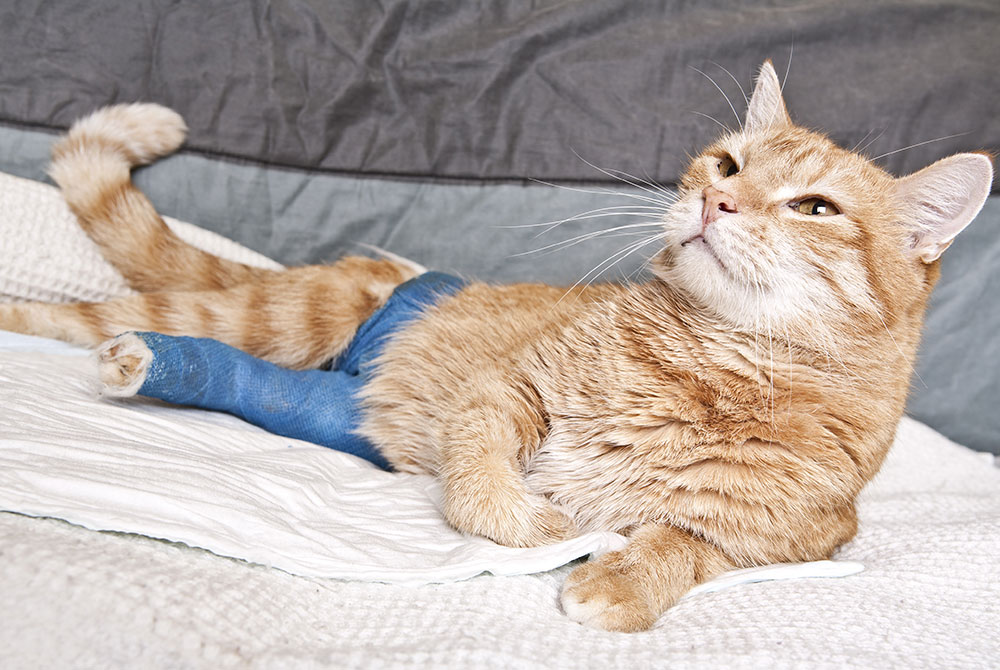
How to Prevent Bleeding Injuries
While accidents can’t always be avoided, taking preventive measures can greatly reduce the risk of injury.
1. Pet-Proof Your Home
- Store sharp objects and toxic substances out of reach.
- Keep pets away from broken glass, sharp edges, and clutter.
2. Supervise Outdoor Activities
- Use a leash or enclosed space when outside.
- Check the environment for sharp rocks, fences, or other hazards.
3. Maintain Regular Veterinary Check-Ups
- Identify and manage clotting disorders early.
- Monitor older pets for tumors or underlying conditions that may cause bleeding.
4. Use Protective Gear
- Consider booties or protective clothing for rough outdoor environments.
Post-injury care is also essential! Learn more about proper recovery with Why Does My Dog Need an E-Collar?.
How Mission Veterinary Clinic Can Help
When emergencies happen, the experienced team at Mission Veterinary Clinic & Animal Emergency Hospital is here to provide:
- Immediate emergency care for bleeding injuries
- Advanced diagnostics, including imaging and blood tests
- Surgical intervention and wound management
- Pain relief, IV fluids, and blood transfusions if necessary
Located at: 16915 San Fernando Mission Blvd, Granada Hills, CA
Learn more about our services: Contact Us
Bleeding injuries can escalate quickly—act fast and seek veterinary care immediately.

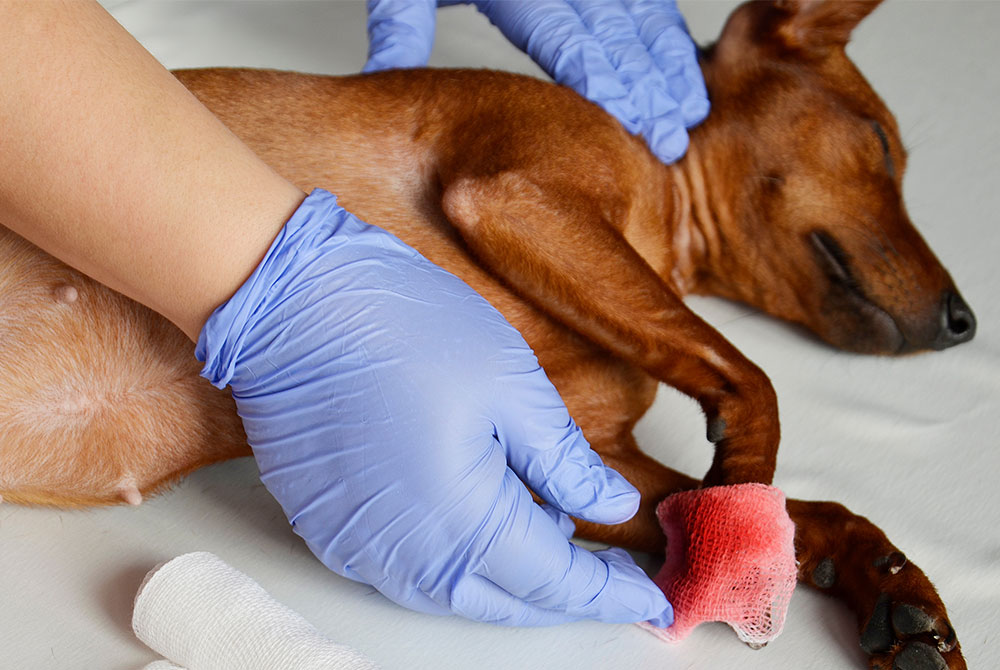
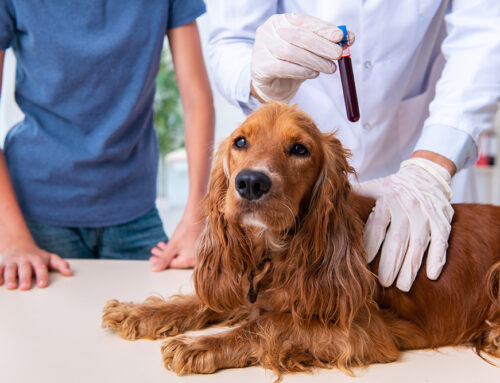

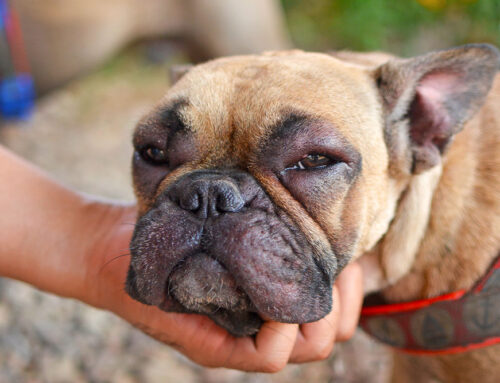




Leave A Comment